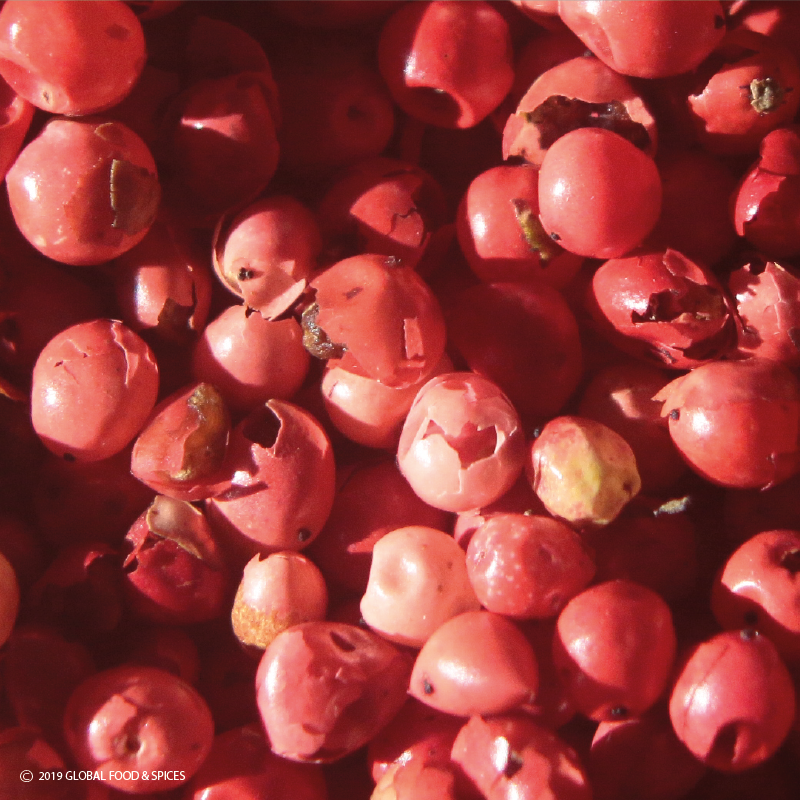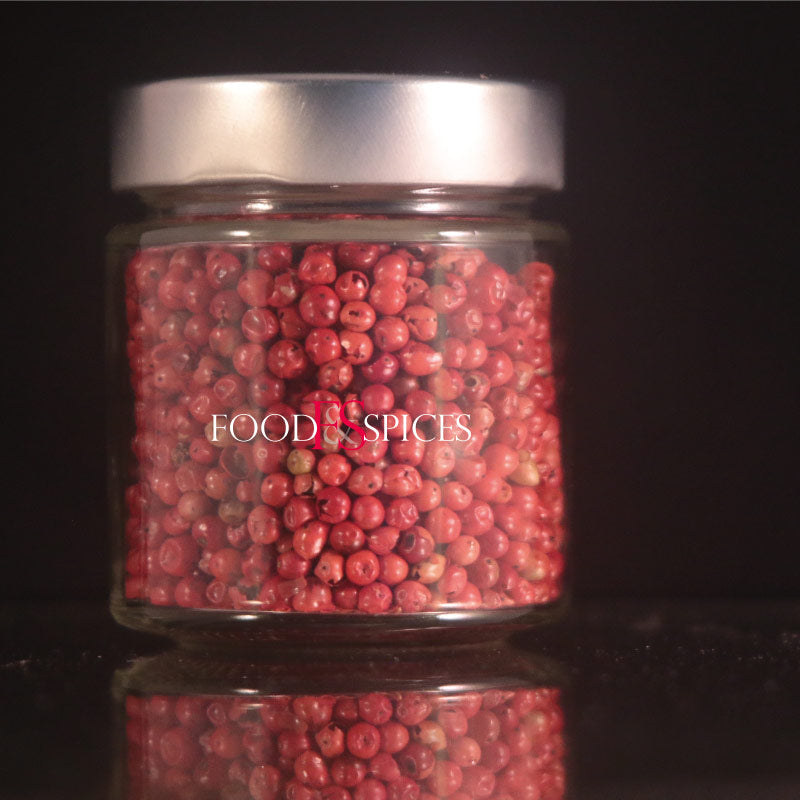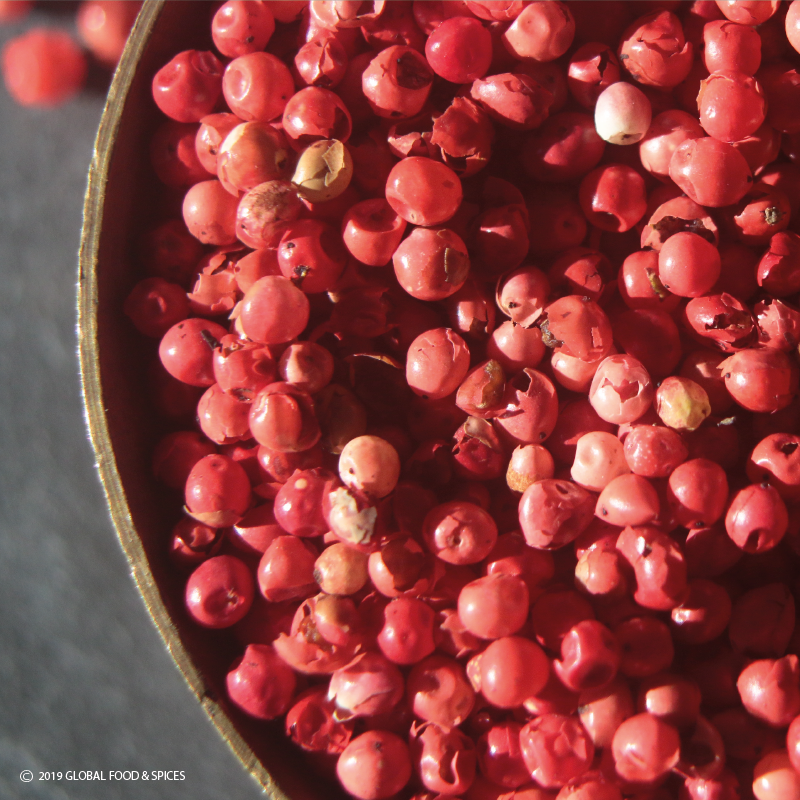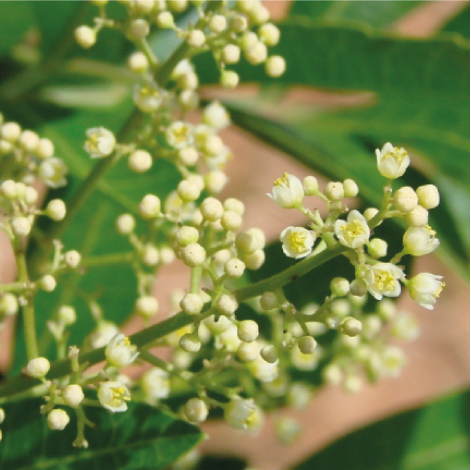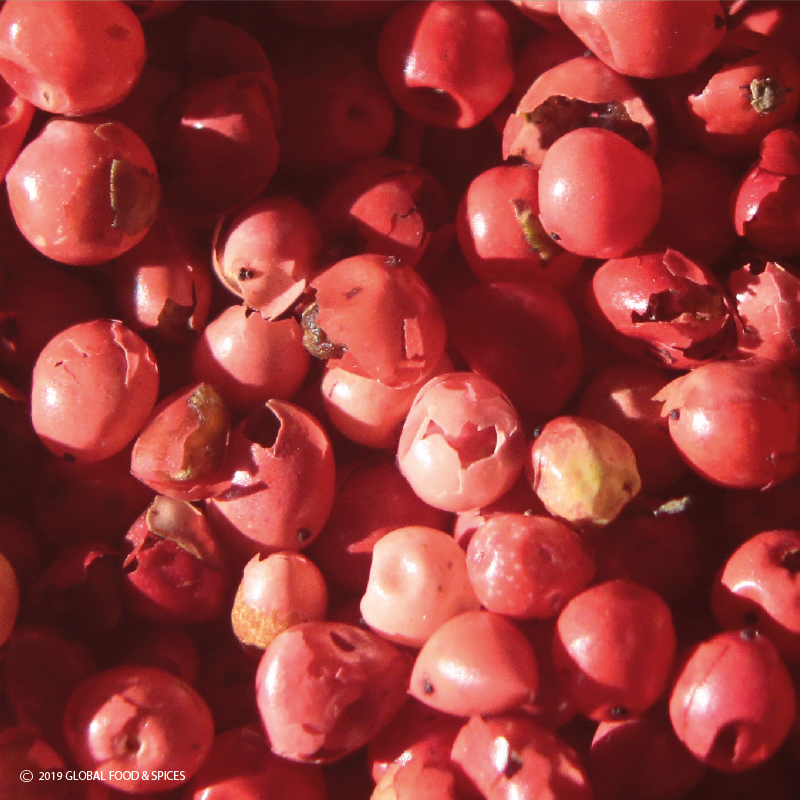depeperwinkel
Brazilian pink pepper
Brazilian pink pepper
Unable to load availability for pickup
The berries of the Brazilian pepper tree are known as 'pink pepper'. The taste is subtly sweet rather than sharp, although the berries contain carvacrol, which is also found in herbs such as savory, thyme and oregano. Our pepper is a fragile, freeze-dried berry from organic cultivation.
We call this pink fruit 'pink pepper', but it is not a pepper, at most a pseudopepper. The plant/tree is not part of the pepper family (Piperaceae), but of the wig tree family, a perhaps less familiar sounding family, but with well-known plant species such as the cashew (nut), the pistachio (nut), sumac (spice), mango and the Greek mastic.
The Brazilian pepper tree (Schinus terebinthifolius) originates from South America, just like the Peruvian pepper tree (Schinus molle). Both are used as a spice.
However, the dried pink peppers mainly come from the islands of Madagascar, Réunion and Mauritius, off the African east coast, including ours. They were 'discovered' by French cuisine and planted on the islands at the beginning of the nineteenth century. The berry has also been produced (again) in Brazil for several years.
Pink berries are 'air-dried', which gives them a wrinkly appearance like black pepper, or they are freeze-dried. Freeze-drying preserves the smooth shape of the berry and better preserves its subtle flavor palette and color.
Smell and taste
The pink pepper is not a pepper, because it is not part of the pepper family (Piperaceae), but of the wig tree family, a not so well-known family, but with well-known plant species such as the cashew (nut), the pistachio (nut), sumac (spice), mango and the Greek mastic.
The pink pepper can hardly be called sharp compared to black pepper. The pungency comes from the phenol carvacrol, an antioxidant that is found not only in pink pepper, but also in herbs such as savory, thyme and oregano. In the berries you can clearly taste juniper berries (also somewhat sweet), which is why the berries are also called red juniper berries.
Brazilian pink pepper contains the monoterpenes
- α- and β-pinene, woody pine scent, as in cumin, pine cone, juniper and hemp
- β-phellandrene, pleasant mint and citrus flavor, also found in allspice,
- para-cimene, woody and fresh citrus-like as in cumin, thyme, savory and marjoram, and
- cadinene, a fresh woody, vegetable aroma, as in cubeb pepper
Usage
Pink pepper combines excellently with cloves, cardamom, cinnamon, savory, oregano. tonka beans, vanilla, allspice, pepper and chili pepper. Pinkberries are used whole, as in Magret de canard or pâté, but are usually broken or coarsely ground. Use pink pepper with veal, poultry, delicate fish dishes such as mousses and with crustaceans such as St. Jacques (scallops), with shrimps, with cheese or in a herb butter or in a pea cream. Delicious when pickled in vinegar.
Also try pink pepper with fruits: peach, orange, melon, mango or papaya. And chocolate, in French tartines (mango) and bread, and even in desserts, such as sprinkling some over pêches melba or using it in peach marmalade.
As botanical
Just an example: the Phizz Star: 50ml Star of Bombay, 15ml Bottlegreen Plump raspberry cordial, 15ml pink grapefruit juice and 30ml prosecco, finished with crushed pink pepper peels between the fingers.Also try Peruvian pink pepper!
Features:
- 100% freeze-dried berries of Schinus terebinthifolius
- origin: Mauritius
Assortment
- available in stand-up pouch, glass and test tube
- stand-up pouches contain 30, 45, 150 and 300 grams respectively
- test tubes 10 ml
- glass jar contains 30 grams
Gift packaging
- the jar is available in a tasteful gift packaging, consisting of a cube box filled with black tissue paper
- for an overview of our gift packaging, please refer to the section gift packaging
Allergens
These berries can cause allergic reactions in people with an allergy to cashew nuts.
General advice
- pink pepper can be eaten raw and used in hot preparations
- use the berries whole - also as a garnish - or grind them. Preferably do not do this with a pepper mill with a metal grinding mechanism. The peels are so thin and greasy that the grinding mechanism can quickly become clogged.
- Also consider not using the whole berries, but only the peels in a dish.
Save:
- store your pink pepper in closed packaging
- preferably store in a dark, dry and cool place
- best before October 2026 (10/26)
- this expiration date is an indication
Would you like to know what this pink pepper tastes like?
You can also try a test tube. The tube contains enough pink pepper to understand the flavor essence.
Share



